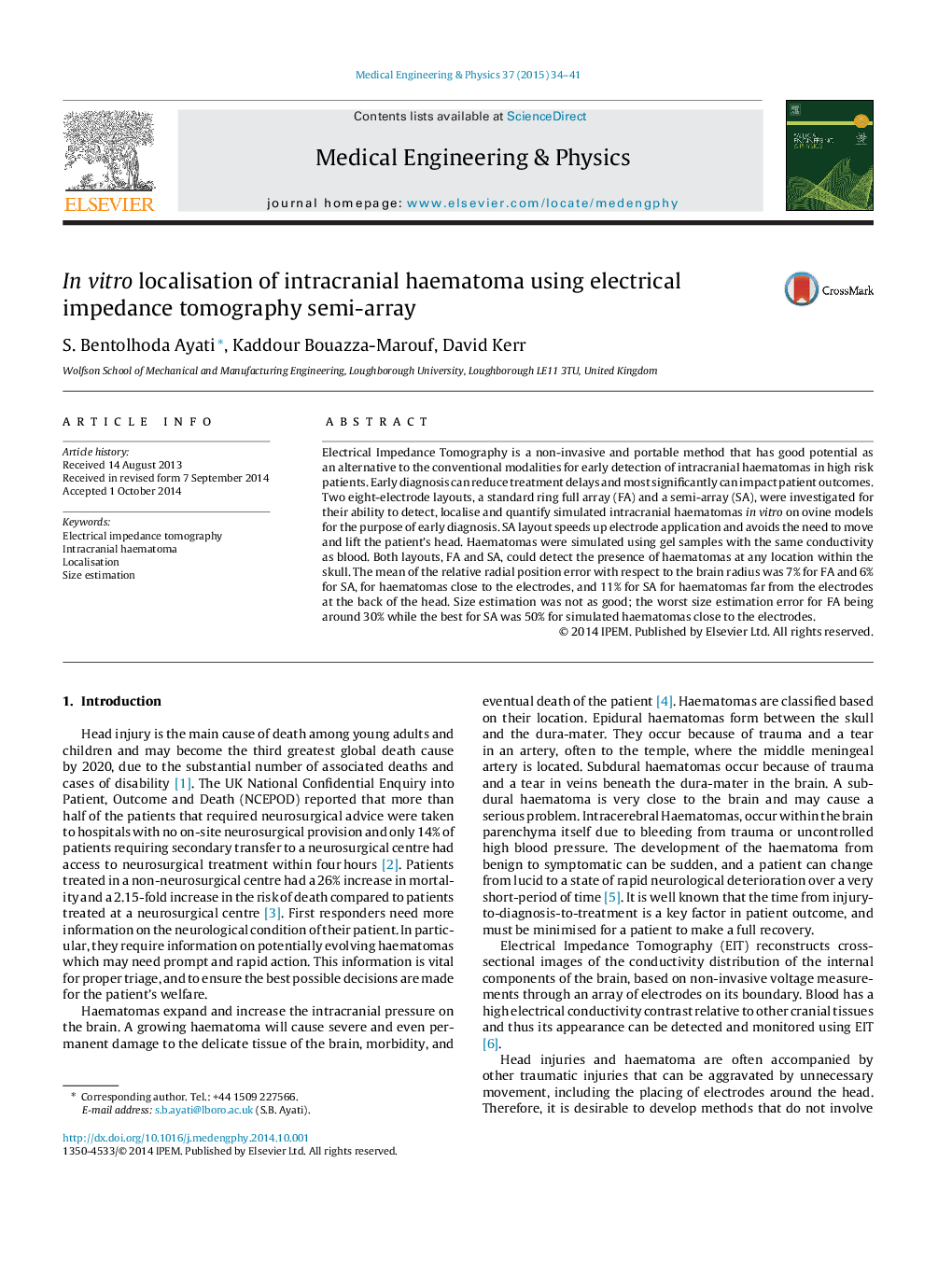| Article ID | Journal | Published Year | Pages | File Type |
|---|---|---|---|---|
| 10435025 | Medical Engineering & Physics | 2015 | 8 Pages |
Abstract
Electrical Impedance Tomography is a non-invasive and portable method that has good potential as an alternative to the conventional modalities for early detection of intracranial haematomas in high risk patients. Early diagnosis can reduce treatment delays and most significantly can impact patient outcomes. Two eight-electrode layouts, a standard ring full array (FA) and a semi-array (SA), were investigated for their ability to detect, localise and quantify simulated intracranial haematomas in vitro on ovine models for the purpose of early diagnosis. SA layout speeds up electrode application and avoids the need to move and lift the patient's head. Haematomas were simulated using gel samples with the same conductivity as blood. Both layouts, FA and SA, could detect the presence of haematomas at any location within the skull. The mean of the relative radial position error with respect to the brain radius was 7% for FA and 6% for SA, for haematomas close to the electrodes, and 11% for SA for haematomas far from the electrodes at the back of the head. Size estimation was not as good; the worst size estimation error for FA being around 30% while the best for SA was 50% for simulated haematomas close to the electrodes.
Related Topics
Physical Sciences and Engineering
Engineering
Biomedical Engineering
Authors
S. Bentolhoda Ayati, Kaddour Bouazza-Marouf, David Kerr,
